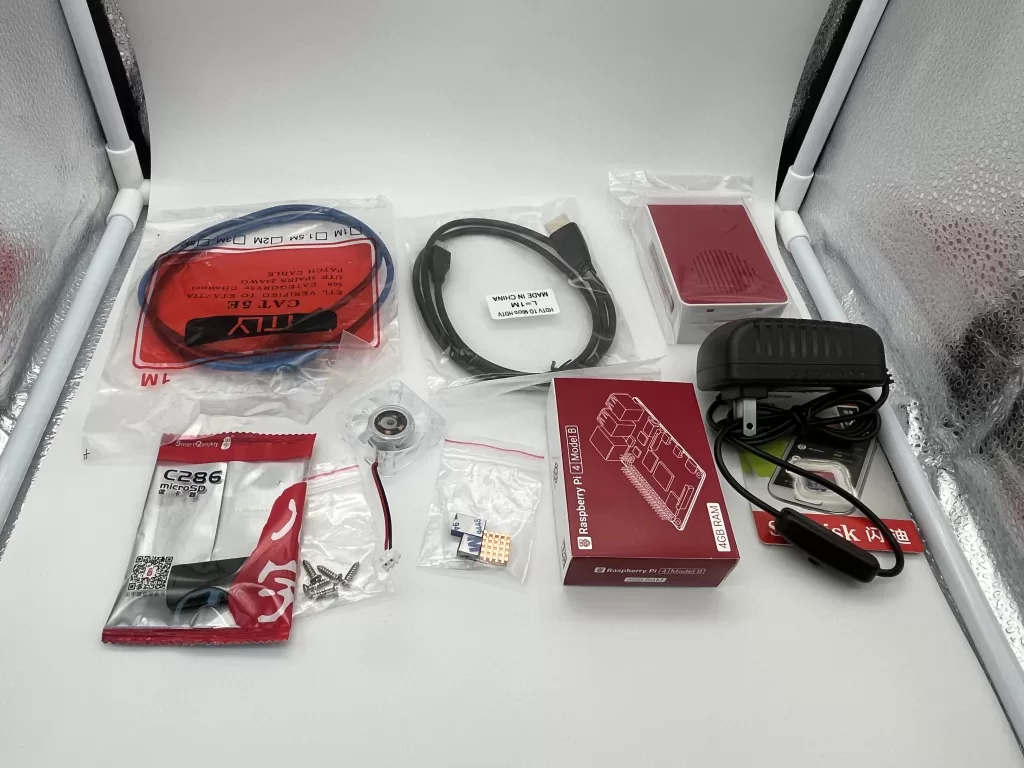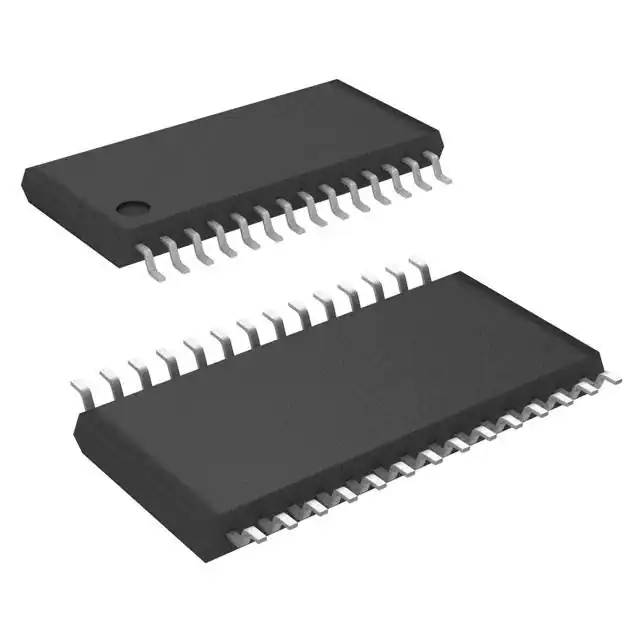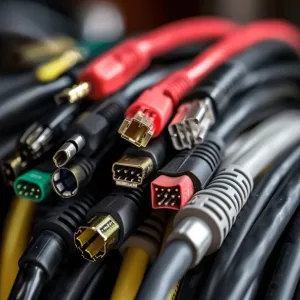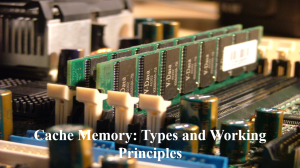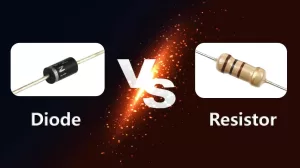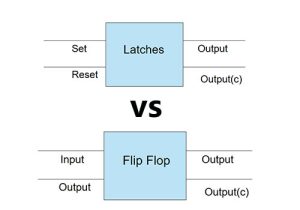In this blog, we will delve into the fascinating world of encoders and decoders, exploring their functionalities, differences, and applications.
View detailsDemystifying Zener Diodes: What They Are and How They Work
Zener diodes are a specific class of semiconductor diode that can control voltage. After Clarence Zener, who in 1934 discovered the Zener effect, they bear his name.
Power supply, voltage regulators, and clipper circuits are just a few of the electronic circuits that use zener diodes. Additionally, they are utilized in some safety circuit types, such as transient voltage suppressors (TVS diodes).
In this blog, we will demystify Zener diodes by explaining what they are, how they work, and some of their common applications.
What is a Zener Diode?
A Zener diode is a particular kind of semiconductor diode that can conduct current in the opposite direction when the breakdown voltage across the diode surpasses a specific level. Quantum tunneling is the root cause of this phenomenon, known as Zener breakdown.
Although zener diodes are identical to normal diodes, they are made specifically to function in reverse breakdown mode. This is accomplished by significantly doping the diode's p-n junction, which lowers the breakdown voltage and increases predictability. They have a variety of uses, from surge protectors in electronic equipment to voltage regulators in power supplies.

Zener Diode Symbol and Structure
The Zener diode symbol resembles that of a conventional diode, but it features a zigzag line across the cathode band to denote its capacity for conducting in the opposite way.
The Zener diode symbol is shown below:

The Zener diode structure is shown below:

A highly doped p-n junction makes up the Zener diode. The electric field at the p-n junction widens when a reverse voltage is applied to the diode. The electric field becomes strong enough to enable quantum tunneling at a specific voltage, allowing electrons to move from the valence band of the p-region to the conduction band of the n-region. This causes a reverse current to flow through the diode.
Video related to Zener Diode
Zener Diode Characteristics
The following are the key characteristics of Zener diodes:
- Breakdown voltage: The voltage at which a Zener diode begins to conduct current in the opposite direction is known as the breakdown voltage. Usually, this voltage ranges from 1.2 to 200 volts.
- Power dissipation: The highest amount of power a Zener diode can dissipate before suffering damage is its power dissipation. Usually, this number ranges from 0.25 W to 50 W.
- Zener impedance: The resistance of the Zener diode in the area of reverse breakdown is known as the Zener impedance. It usually has a relatively low value, between 1 and 10.
Zener Diodes vs Schottky Diodes
Schottky diodes are another type of diode that is commonly used in electronic circuits. They can conduct current in the opposite way, making them comparable to Zener diodes. Between the two varieties of diodes, there are, nonetheless, some significant distinctions.
- Breakdown voltage: Schottky diodes typically have a breakdown voltage between 0.3 V to 2 V, which is substantially lower than that of Zener diodes. They are therefore inappropriate for applications requiring voltage regulation.
- Forward voltage drop: Schottky diodes typically have a forward voltage drop between 0.2 V and 0.4 V, which is smaller than that of Zener diodes. They are thus perfect for uses like power supply circuits where low voltage loss is crucial.
- Switching speed: Schottky diodes are significantly faster at switching than Zener diodes, which makes them perfect for high-frequency applications.
Zener Diode as a Voltage Regulator
Voltage regulators are one of the most often used Zener diode applications. A voltage regulator is a circuit that keeps the output voltage constant despite changing the input voltage. Utilizing the reverse breakdown characteristic of zener diodes, simple and efficient voltage regulators can be made.
A simple Zener diode voltage regulator circuit is shown below:

The Zener diode and load are linked in parallel in this circuit. When the input voltage exceeds the breakdown voltage of the Zener diode, the Zener diode conducts current in the opposite direction, regulating the output voltage to the Zener voltage.
Zener Diode Applications
Zener diodes are used in a wide range of applications, including:
- Voltage regulation: Zener diodes can be utilized to control the voltage in a power source. The Zener diode will maintain a constant voltage across the load when connected in parallel with the load, independent of variations in the input voltage.
- Voltage reference: Zener diodes can also be utilized as a voltage reference. A device that produces a consistent and precise voltage is called a voltage reference. When designing precise electronic circuits, zener diodes are frequently utilized as voltage references.
- Voltage shifting: Zener diodes can be used for voltage shifting, which involves changing the voltage level of a signal. This is helpful in situations where the signal voltage needs to match another device's input voltage.
- Voltage clamping: Zener diodes can be used to clamp the voltage of a signal to a specific value for voltage clamping. This is helpful for preventing voltage spikes on delicate electronics.
- Surge protector: Zener diodes can also be utilized in this capacity. Electronic devices are shielded from unexpected voltage spikes by surge protectors. Surge protectors frequently use zener diodes to shield electronic equipment from lightning strikes and other power spikes.
Testing Zener Diodes
Zener diodes must be tested before being used in electronic circuits. This is because Zener diodes have a limited lifespan.
Zener diodes can be tested in a variety of methods. The use of a diode tester is one such approach. The forward and reverse voltage drop of a diode can be measured using a device called a diode tester.
The use of a power source and a voltmeter is an additional method for testing Zener diodes. The positive terminal of the power supply should be connected to the anode of the Zener diode, and the negative terminal should be connected to the cathode of the Zener diode, in order to test the diode this way. The power supply voltage should then be gradually increased until it reaches the Zener voltage. The diode will start to conduct at the zener voltage, and regardless of changes in the power supply voltage, the voltage across the diode will stay constant.
How to Test Zener Diodes?
To test a Zener diode using a multimeter, follow these steps:
- Dial in the multimeter's diode setting.
- Connect the multimeter's positive lead to the cathode of the Zener diode and its negative lead to its anode.
- The forward voltage drop of the Zener diode should be visible on the multimeter. This number needs to be a little bit greater than the Zener diode's breakdown voltage.
- Connect the positive lead to the anode of the Zener diode and the negative lead to the cathode of the Zener diode by switching the polarity of the multimeter leads.
- The breakdown voltage of the Zener diode ought to be visible on the multimeter.
The Zener diode is in good operating order if it passes both of these tests. The Zener diode is faulty and shouldn't be used in a circuit if it fails either of these tests.
Common Testing Techniques and Equipment
- Using a Zener diode tester: A Zener diode tester is a specialized tool that can be used to test Zener diodes. Zener diode testers are typically more accurate than multimeters, but they are also more expensive.
- Using a curve tracer: A curve tracer is a sophisticated instrument that can be used to test a variety of electronic components, including Zener diodes. Curve tracers are typically very expensive, and they are typically only found in laboratories and professional electronics workshops.
Conclusion
As a voltage regulator and a safeguard against voltage spikes, zener diodes are essential components of contemporary electronics. We looked at the basics of Zener diodes in this blog post, covering their traits, uses, and distinctions from other types of diodes like TVS and Schottky diodes. A step-by-step manual for testing them is also available from us. Engineers and amateurs can take advantage of Zener diodes' potential to design dependable and effective electronic circuits by comprehending their capabilities and applications.
Zener diodes are an essential component whether you're creating a voltage regulator, voltage reference, or surge protector. Take advantage of the power of Zener diodes to expand the possibilities for your electronic creations.
Ella
Ella is a skilled embedded systems engineer with experience in PCB design and microcontroller programming. She is committed to following the most recent developments in the field and is constantly seeking for ways to apply them to her work.
WEW ALL POSTS BYElla-
Understanding Encoder vs Decoder: What’s the Difference? 22
-
RG6 vs RG59: Which Coaxial Cable Should You Choose? 66
In this blog, we will delve into the key distinctions between RG6 and RG59 cables, empowering you to make an informed decision for your specific ne...
View details -
Comparison of PLC and Arduino: What’s the difference? 707
PLCs and Arduinos are two examples of electronic control devices that can be used to automate processes. The ideal option for a given project will ...
View details -
Cache Memory: Types and Working Principles 568
Cache memory plays a crucial role in computer systems by providing faster access to frequently used data and instructions. It acts as a buffer betw...
View details -
Unveiling the Difference between Diode and Resistor 747
Two of the most fundamental components in an electronic device are diodes and resistors. They can be found in both basic and sophisticated circuits...
View details -
Flip-Flop vs. Latches: Main differences between them 594
Flip-Flop is synchronous, but Latches is asynchronous. Flip-flops are edge sensitive, but Latches are extremely sensitive and use an enable signal.
View details
 Ampheo Electronics
Ampheo Electronics